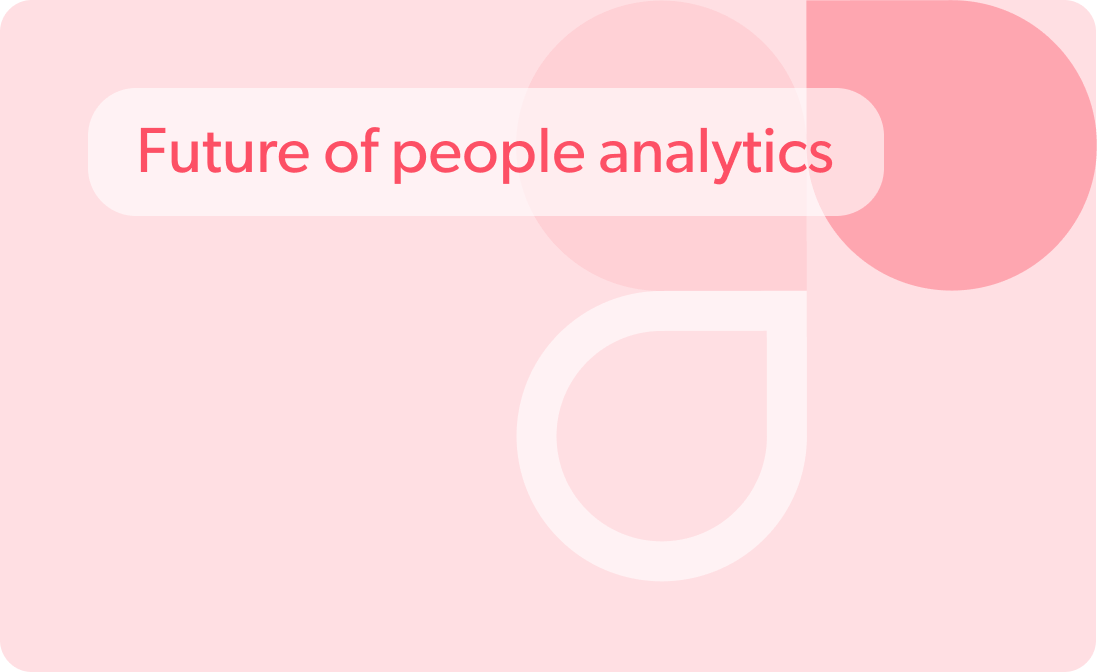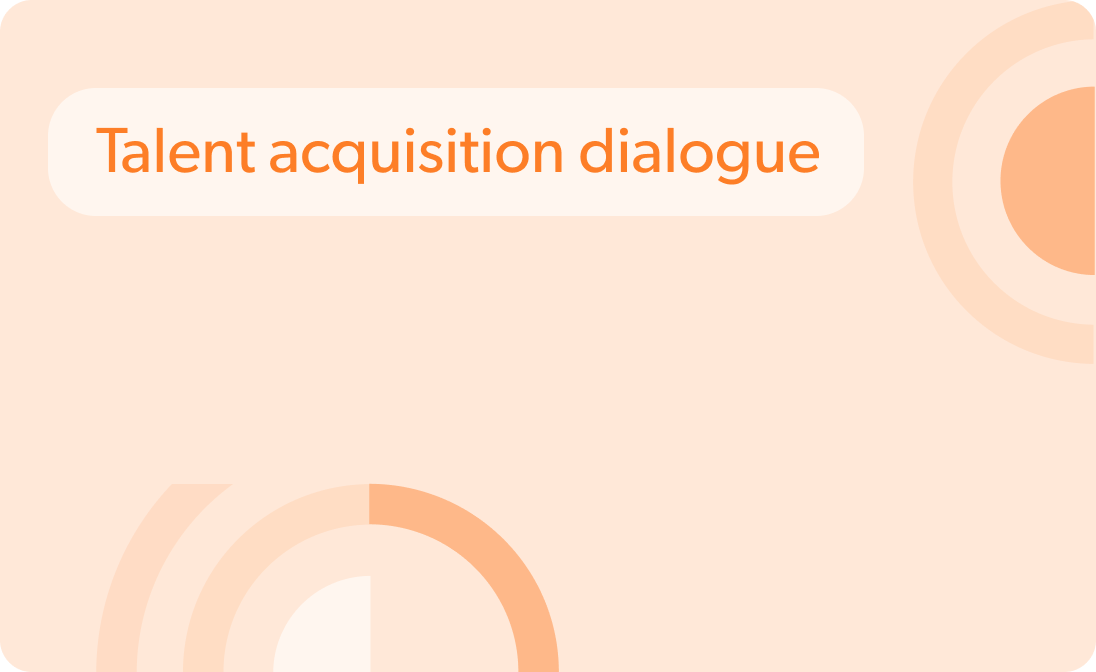How to address the real challenges of inclusive hiring
Table of contents
- Why diversity and inclusion hiring fail sometimes
- Inclusive hiring practices
- Check the importance of diversity and inclusion in your organization
- Write inclusive job descriptions
- Use platforms that help create diversified job descriptions
- Expand the reach of your job postings
- Offer employees opportunities for vertical and horizontal career growth
- Three times mentioned — use technologies
- Measure your inclusive hiring program
- References and further reading
Why do some diversity and inclusion hiring efforts fail despite good intentions?
The failure often lies in superficial commitments, misplaced responsibility, tokenism in recruitment, inadequate structural changes, and an imbalance between belongingness and uniqueness. Global hiring adds layers of complexity with security and legal challenges. To succeed, organizations should move beyond mere rhetoric, implementing inclusive hiring practices through thoughtful job descriptions, diverse recruitment platforms, equitable interviewer panels, and effective use of technology. Understanding and addressing these multifaceted challenges is crucial for creating a diverse and inclusive workplace. So, let’s see why companies usually fail inclusion practices and how to avoid these mistakes.
Why diversity and inclusion hiring fail sometimes
Despite their commitments, the failure of diversity and inclusive hiring in some companies can be attributed to systemic and procedural issues. Key factors contributing to these failures include:
- Superficial commitments. Many organizations appoint DEI executives or announce initiatives as a cosmetic measure. This approach often fails to bring about substantial change in the workplace, as it doesn’t address the deeper, systemic issues that underpin inequality and exclusion.
- Displaced responsibility. The responsibility to raise awareness and drive change often falls on marginalized groups rather than those in positions of power who can make significant changes. It burdens these groups unfairly and perpetuates a cycle where real change is minimal.
- Tokenism in recruitment. Practices like the initial implementation of the Rooney Rule in the NFL demonstrate tokenism, where including a single diverse candidate in a hiring process can diminish their chances of being hired. Hiring a candidate from a minority group solely to meet diversity quotas, without considering their qualifications or fit for the role, can lead to decreased employee morale, reduced productivity, reputational damage, overemphasis on diversity over merit, skills gaps, and business performance. However, quotas also have benefits, such as ensuring diverse representation, particularly in parliaments. They can promote equality by providing opportunities to historically underrepresented groups. The key is to balance diversity initiatives with a focus on qualifications and skills to avoid these pitfalls and create an inclusive, effective workplace.
- Inadequate structural changes. Diversity and inclusion efforts often only gain traction with significant organizational structure and process changes. It includes the need for transparent promotion processes, addressing biases in recruitment and evaluation methods, and actively developing diverse talents for leadership roles.
- Imbalance between belongingness and uniqueness. There’s often a struggle to balance the need for employees to feel a sense of belonging with the need to maintain their uniqueness. Overemphasis on either can lead to problems such as a lack of diversity in thought (through groupthink) or a failure to integrate diverse teams effectively.
- Meritocracy myths. The belief in a pure meritocracy often ignores systemic barriers that prevent equal opportunities. It can hinder the advancement of underrepresented groups and perpetuate existing inequalities.
- Lack of specific, actionable goals. Diversity and inclusion initiatives can become mere rhetoric without specific, measurable actions and goals. Setting clear, achievable targets is essential for real progress.
- Unconscious bias. Research has shown that unconscious biases can significantly impact hiring decisions, often contradicting a firm’s stated diversity objectives. These biases may be more pronounced under certain conditions, such as when hiring managers are fatigued.
- Socioeconomic bias in valuing experience. Like standard summer jobs, certain types of experience, such as prestigious internships, are often valued more than others. It can introduce a bias against those who may not yet take unpaid internships due to socioeconomic constraints.
- Inaccurate perceptions of candidate preferences. There can be mistaken beliefs about the likelihood of minority or female candidates accepting job offers, potentially leading to less pursuit of these candidates based on the assumption that they would be challenging to hire.
- Failure to address inclusion post-hiring. Focusing only on hiring diverse candidates without fostering an inclusive environment can result in high turnover rates when employees from minority groups may leave if they feel isolated or unsupported and lose investment in recruitment.
Security issues while hiring people from around the world
Hiring people worldwide can benefit an organization, including diverse perspectives and access to a wide talent pool.
When hiring globally, organizations face several key security challenges. Different countries have varied data privacy laws, like Europe’s GDPR, requiring careful personal and sensitive data handling. Remote workers increase cybersecurity risks, necessitating secure connections and cybersecurity training. Protecting intellectual property is more complex due to different international laws. Cultural and communication differences in diverse teams could lead to understanding security protocols. Background checks are more challenging with international hires due to varying record availability and legal differences.
Compliance with each country’s labor laws is crucial to avoid legal and security issues. Physical security is also concerned in regions with higher political instability or crime risks. The dispersed nature of a global workforce increases the potential for insider threats and complicates monitoring sensitive information. Legal complications arise from dealing with multiple jurisdictions, especially in security breaches or disputes. Companies need comprehensive security policies, secure technology, regular training, and adherence to legal and regulatory standards in all operational areas to address these challenges.
Inclusive hiring practices
There is much your organization can do to implement long-term inclusive hiring practices that benefit everyone. Here are some steps to implement inclusive hiring right away.
Check the importance of diversity and inclusion in your organization
Diversity encompasses a variety of individual characteristics and the intersection of these traits. Commonly, discussions on diversity focus on gender and race, but it’s important to recognize other aspects such as age groups, neurodiversity, physical abilities, military background, and more. Take, for instance, the distinct experiences of a Black woman compared to those of a White woman. Despite sharing the same gender and potentially similar professional roles, their experiences can significantly differ.
Write inclusive job descriptions
To write inclusive job descriptions, start with a gender-neutral job title and use inclusive language, avoiding gender-specific terms and industry jargon. Focus on the job’s core responsibilities rather than an exhaustive list of requirements, and consider removing degree requirements if they aren’t essential. Research from Textio shows that gender-neutral language in job postings can fill positions faster and attract a more diverse applicant pool. For instance, Zillow Group saw a significant increase in female applicants who used certain words in their job postings.
Avoid words perceived as gender-biased, like “strong” or “sensitive,” and opt for simple, clear sentences, use bold text instead of italics or underlining for emphasis. Consider incorporating dyslexia-friendly fonts and diverse content formats, such as videos and downloadable fact sheets, to enhance accessibility.
Key accessibility standards to implement include:
- Providing transcripts and closed captions for video and audio content.
- Adding alternative text descriptions for images.
- Adhering to color contrast guidelines.
When updating your career website, follow the Web Content Accessibility Guidelines (WCAG).
Furthermore, as you enhance your site, ensure you openly declare your adherence to the Equal Employment Opportunity Commission (EEOC) standards regarding diversity and inclusive hiring practices. This commitment should be prominently featured in all job postings.
Use platforms that help create diversified job descriptions
Besides Textio, here are some platforms that help create diversified job descriptions and attract talent that are designed to assist companies in reaching a broader, more varied candidate pool:
Expand the reach of your job postings
Be aware that job seekers employ various methods to find employment opportunities. These include perusing print advertisements, participating in virtual job fairs and boot camps, exploring opportunities on social media, browsing job listings on mobile devices, and even considering internal company positions. To tap into a wider and more diverse talent pool, diversify the platforms used for job postings. Here are some job boards that can aid in attracting a diverse range of candidates:
- Diversity.com
- iHispano
- National Association of Asian-American Professionals (NAAAP)
- Fairygodboss
- Pink Jobs
- smartPeople (diversified internal talent marketplace platform).
Implementing this approach allows your hiring team to gain a comprehensive understanding of each candidate, assessing a variety of attributes. A diverse interview panel helps minimize bias and enables the viewing of candidates through multiple lenses. One effective method is to conduct group interviews. For instance, Intel implemented a practice where each interview panel has at least two women or individuals from underrepresented groups. This strategy led to a 41% increase in hires from diverse backgrounds within two years.
75% of the top-performing organizations in the Diversity Best Practices Inclusion Index insist on diversity within their interviewer panels.
Offer employees opportunities for vertical and horizontal career growth
Make sure your employees are aware of internal promotion opportunities and that there is a clear internal recruitment process. Track the movement of different groups of employees within the company. This tracking will help identify barriers to promotion and formulate solutions such as mentoring or sponsorship initiatives.
Prioritizing internal mobility is critical to employee retention. People who work in companies with high internal mobility tend to stay almost twice as long.
Harness talent and embrace diversity in your organization
Embrace a spectrum of perspectives, backgrounds, and talents, and create a vibrant community where every voice is heard, and every contribution is valued. Develop a dynamic workforce driving towards a future of limitless possibilities.
Three times mentioned — use technologies
Technology plays a vital role in creating an inclusive hiring process. First, it standardizes the most important aspects of hiring, ensuring fairness. Second, it helps recruiters keep candidates engaged throughout the hiring journey.
Inclusive hiring is also a new hiring method fundamentally aimed at creating equal conditions for all applicants. For this, the technology can be used in several ways:
- Implement resume screening in conjunction with job simulation or skills assessment tools. It allows for a more objective assessment of the candidates’ abilities. But one little pro tip: recalling the one-time situation with Amazon in AI-driven hiring failure, ensure that the training data for AI models is diverse and unbiased and maintains a system of human oversight and ethical review to counteract potential biases and ensure fair decision-making. Additionally, AI algorithms’ transparency and explainability are crucial to understanding and rectifying any inadvertent discriminatory practices.
- Offer role-relevant tests that simulate real-world work tasks, allowing candidates to demonstrate their competencies practically.
- Use AI-powered diversity recruiting software. These tools use algorithms to rank candidates based on performance, focusing on selection rather than exclusion. For example, the smartPeople solution leverages algorithms to evaluate candidates impartially, based on their skills and performance, rather than on subjective criteria. This approach facilitates a more inclusive and equitable hiring process and ensures that organizations have the best talent, enhancing overall productivity and fostering a diverse workplace culture.
Measure your inclusive hiring program
To assess your inclusive hiring‘s effectiveness, focus on strategic data analysis. Key metrics include diversity representation in the hiring funnel and the progression rates of diverse candidates. Use your applicant tracking system to compare the profiles of hired versus non-hired candidates and monitor the integration of new hires, particularly in their first year.
Employee retention rates, categorized by demographics like gender and ethnicity, are crucial indicators. High retention suggests a positive, inclusive environment, while frequent departures may point to challenges in workplace inclusivity.
Analyze the diversity in your job advertisement responses to gauge their effectiveness in attracting varied applicants.
References and further reading
Here are some resources you might find interesting about diversity and inclusion in the workplace:
- How inclusive hiring to drive business success
- Diversity hiring best practices
- Diversity – What the future/Ep. 10
- Global Study: Inclusive hiring practices to start today
- Inclusive hiring: How to leverage this talent acquisition strategy
- Research: How companies committed to diverse hiring still fail
- Achieving disability inclusive employment – Are the current approaches deep enough?
Stay up to date with our newsletter
Every month, we’ll send you a curated newsletter with our updates and the latest industry news.



























 info@hrforecast.de
info@hrforecast.de
 +49 89 215384810
+49 89 215384810






